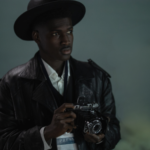
My Goodreads TBR Is My Biography
Every so often, I scroll through my to-be-read (or, as they refer to it, Want to Read) list on Goodreads. Sometimes, it’s to reorganize it. Sometimes, it’s to weed it. Sometimes, it’s just to revisit my past self. My Goodreads TBR is my personal biography. It’s tracked my interests and life events for as many years as I’ve had an account. Even if my intentions end up being more aspirational than practical (my current Goodreads TBR sits at a healthy 828 books as of this writing), it’s still a fascinating tool that gives me a look into years long gone.
Despite the name and supposed purpose of my Goodreads TBR, it’s actually somewhat unusual for me to refer to the list to decide on my next read. I add books with good intentions, imagining myself returning to the list to be reminded of books that looked interesting when I discovered them. But the reality is, my interests shift so rapidly that by the time I rediscover a book on my TBR, I’m no longer invested in reading it. Sometimes, this means I weed the title. Other times, I leave it on there, especially if I think there’s a chance my interest in the topic will spark again. Still other times, I don’t even recall why I added a particular book or handful of books to the list and I ask myself, “What was I interested in at the time to label these as TBR?”
Most of the time, I remember. And it’s this memory of the books I’ve added that helps me map my own history. Frequently, I can track my own writing projects—more often than not ultimately abandoned—through my Goodreads TBR. I love books about faeries and have tried more than once to write my own. You can see the rough timing of these attempts to DIY a book about faeries throughout my TBR. A cluster of faerie books often means I was inspired to give it a go once again and, as a result, planned to collect a number of titles that were similar to my own idea to read as models.
This past summer, I’d thought of a sort of coming-of-age novel that was, in part, inspired by TikTok “POVs” (point-of-view videos) that would center on a teen romance and a girl coming out of her shell. So, in June, I added Rebecca Barrow’s This Is What It Feels Like and several Katie Cotugno novels that I hadn’t yet read.
Just after I picked up running last winter, I added probably a dozen books, both fiction and nonfiction, about running. I haven’t ended up reading any of them, but still hope to—while I ended up running consistently for far longer than I actually expected myself to, I did fall off during the summer because of the heat and the lack of treadmill access thanks to the pandemic. Maybe picking up one of these books will inspire me to get back into the groove. Maybe my Goodreads TBR is a biography not only of my past self, but my future self, too.
In September of 2019, more faeries—but this time, there’s a handful of books on fairytale theory. I can’t remember exactly what I had in mind, but I do recall wanting to craft some fiction that was also a conversation with the theory of fairytale structure. So you’ll find Jack Zipes and other scholars examining the traditional fairy tale around that time marked as “want to read.”
June 2016 saw me researching architecture and women’s spaces. I attended a historically women’s college and, while reading Text Me When You Get Home by Kayleen Schaefer, learned about the Barbizon Hotel, which housed women in the longterm in New York City for decades. I was immediately enamored by the idea. So, I endeavored to try my hand at longform nonfiction. I bought several hundred index cards on which to record found facts and started in on what little material there was about women-specific spaces in the early to mid 20th century, residential hotels, and the architects of the Barbizon Hotel. I found most of my information in articles and even reached out to older alumnae/i from my alma mater in hopes that a few of them would have stayed at the hotel at one point, but the books were lacking—hence my desire to write one of my own. I put the project on hiatus for lack of information and lack of knowledge in how to gather first hand accounts when I had no contacts. But a few books from that period still sit on my TBR. More recently, a fellow Rioter alerted me to a new book, recalling that I had asked if anyone knew of any books on the topic (and I marveled at her memory, since I’d asked more than 18 months prior): The Barbizon: The Hotel That Set Women Free by Paulina Bren. Moving through my Goodreads TBR, I’m reminded of how I’d made an attempt to write a nonfiction book. And although someone beat me to the punch with the book, I still see my efforts reflected in my Goodreads TBR and I’m encouraged at the idea that I tried at all.
The longest stretch of books on a particular theme involves sibling loss. After my brother died unexpectedly in 2016, I took a few months away from reading at my usual pace. As I came back to it, I hungered for stories that reflected my own experience. And once again, I took up a project: I would read fiction about sibling loss and compare them to my own emotional experience. While each real life experience with sibling loss is no doubt unique, from the stories I read about sibling loss, there were examples that definitively felt more genuine than others. I had the idea that I might compile the books that treated the subject most realistically and genuinely for readers who might also benefit from seeing their emotional and lived experiences reflected back to them from a book. Every so often, I still add sibling loss books to my Goodreads TBR and tag them as sibling loss books, the original concept still churning in my mind.
On and on going back through my nearly 900-book list, I’m able to visit my past self. I see versions of myself I’ve forgotten about, versions of myself I wanted to explore further, versions of myself that no longer exist. It’s almost like looking at a photo album. I think about how the books I haven’t read have shaped me almost as much as the books I have read—or maybe they’ve shaped me more. Whether or not I ever get around to reading these books is irrelevant. They’re already a part of my story.













